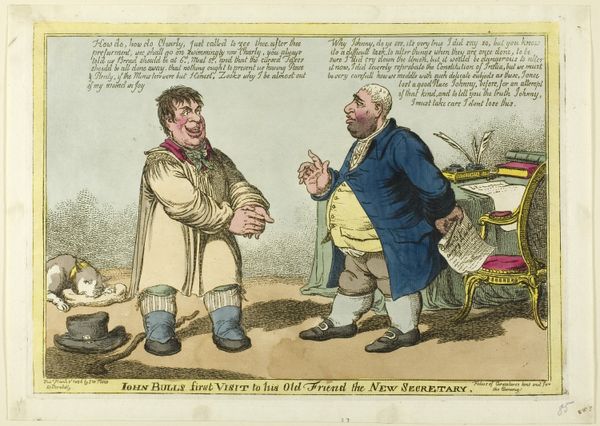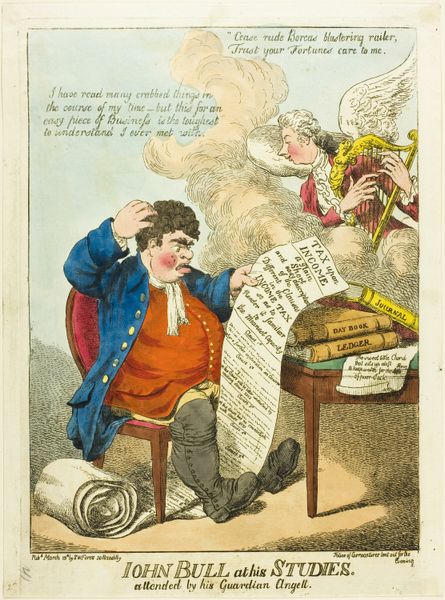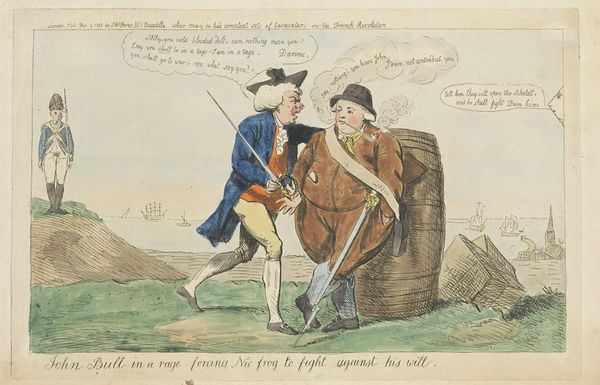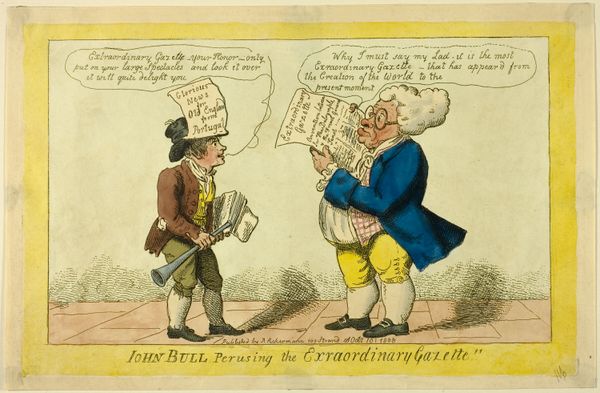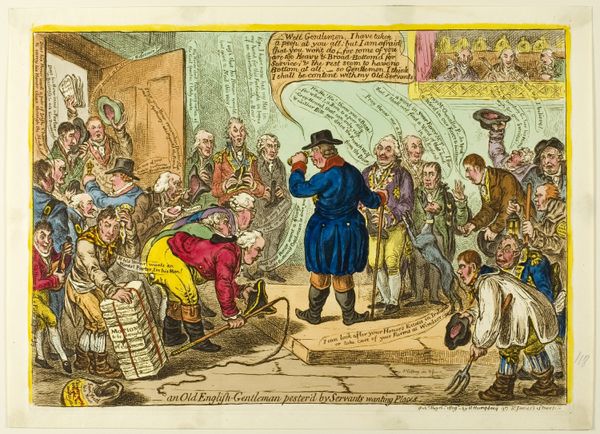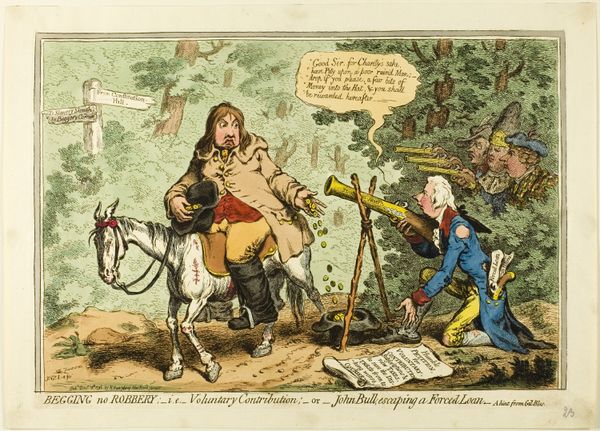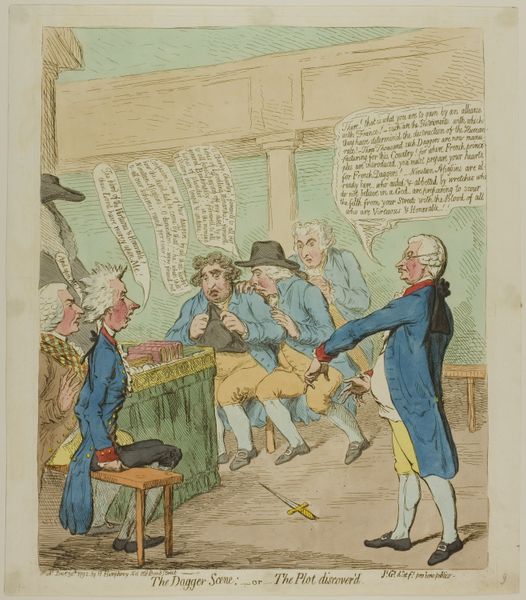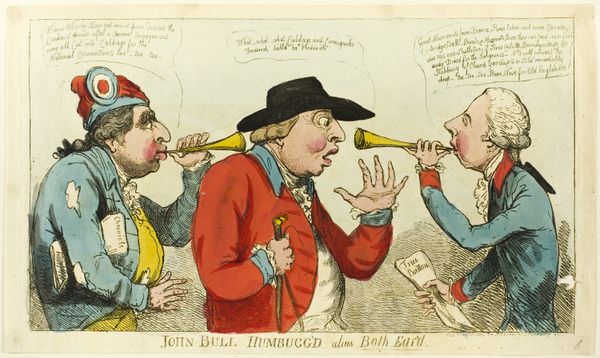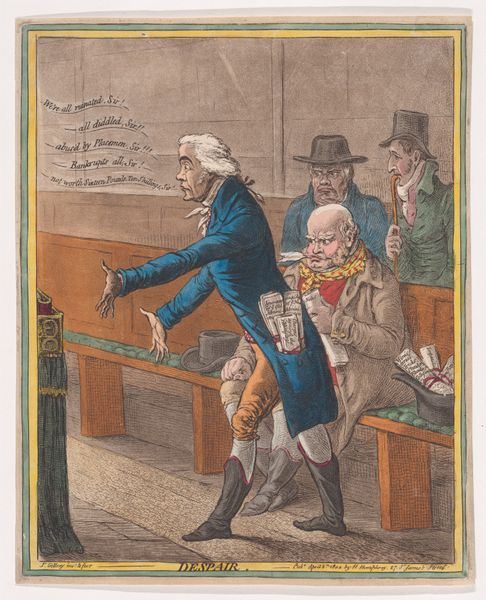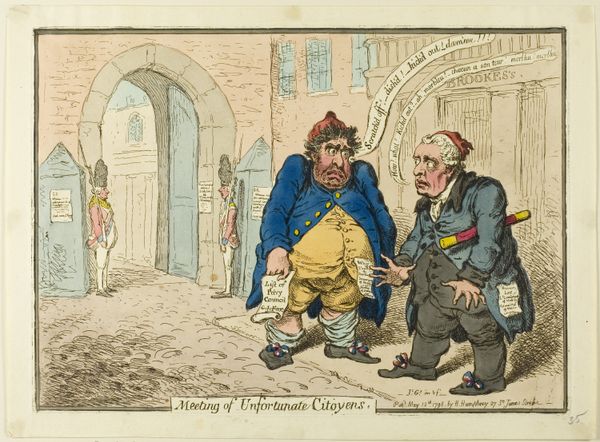
drawing, print, etching, ink, pen
#
portrait
#
drawing
#
narrative-art
# print
#
etching
#
caricature
#
caricature
#
figuration
#
ink
#
romanticism
#
pen
Dimensions: height 209 mm, width 221 mm
Copyright: Rijks Museum: Open Domain
Curator: This etching, created with pen and ink, is titled "The Caricaturist's Apology," and it comes to us from 1804. It's signed by Giles Grinagain. The print teems with angry energy and what strikes me is the obvious class divide it depicts. Editor: Absolutely. My immediate reaction is to the overt display of power and the vulnerability rendered on the caricaturist on his knees. The materiality, specifically the deliberate, almost crude linework, amplifies the raw emotion on display. This isn't about subtlety; it's a visceral reaction rendered on paper. Look at how the heft of the angry man contrasts so distinctly to the slighter build of his apologetic counterpart! Curator: The scene clearly draws on the social and political climate of the time. Caricatures, especially of public figures, could be dangerous business, and the piece cleverly plays on the tension between artistic freedom and the potential consequences for lampooning authority. The institution of artistic practice is itself implicated as the kneeling man seems to pay the price of the angry gentleman's patronage or societal power. Editor: I agree. The medium – a print meant for wider distribution – points to questions around access and readership. Who could afford to buy and display something like this? How might its meaning have shifted across different social groups? The etching as a means of social commentary had a different level of cultural impact than if this was rendered in private on a sketch pad, and in fact makes this a powerful protest piece, too. Curator: I find the exaggerated features fascinating – the bulging eyes, the oversized club – are those merely theatrical elements to create a sense of outrage, or also comments on consumption and social mores? Consider the labor involved, not just in creating the image, but also in the production and distribution of the prints themselves. Who benefits from this system of artistic critique? Editor: That's a great point. And beyond financial benefit, let’s consider the social currency involved: The satirist's risk-taking allows us, as viewers then and now, to participate in the critique of power. By literally "kneeling", it shows how such gestures impact individual status as well. So both tangible materiality and the very real repercussions of producing that, should not be missed. Curator: This print allows us to see the intersection of political narrative, public opinion, and art. It becomes less about aesthetic values, but its position within culture, as well as being documentation. Editor: Precisely. And that awareness lets us to interrogate the systems of power, both physical and symbolic that surround its creation.
Comments
No comments
Be the first to comment and join the conversation on the ultimate creative platform.
